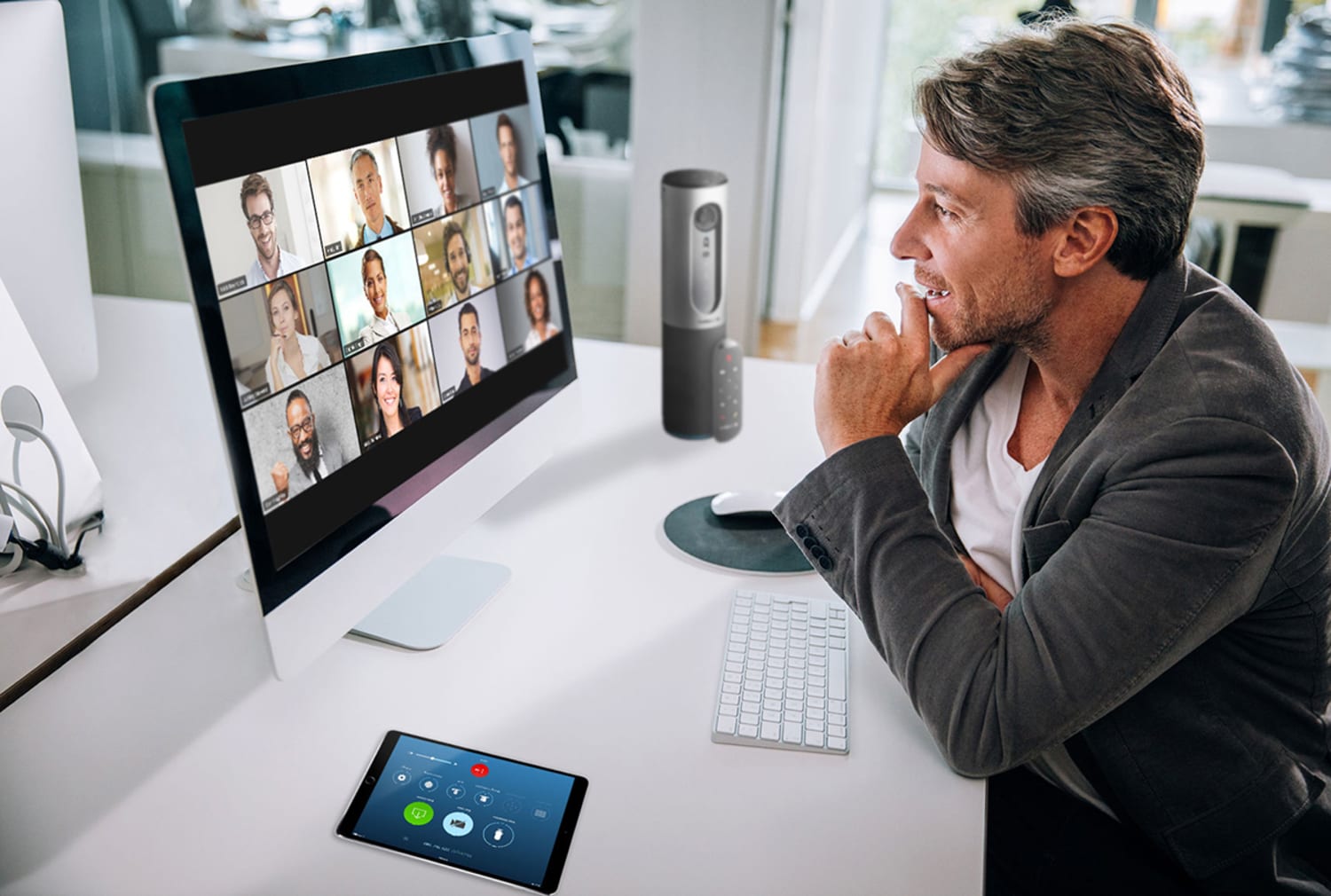As enforced isolation drives a mass exodus from public life, living spaces are quickly evolving to encapsulate everything from the boardroom to the yoga studio to the lecture hall.
As daily life turns inward, the home now encompasses entire worlds, from the office to the gym and everything in between.

Recent years have seen a rise in digital nomads, for whom remote work is nothing out of the ordinary. Even so, the work from home model was traditionally labeled a luxury in many organizations. But now, corporate contingency plans are putting remote working structures to the test. With widespread shelter in place mandates or full-fledged lockdowns, working from home is the new norm for many. As people set up their new workspaces, it’s driving a spike in home office device and furniture sales. Monitors are flying off the shelves at retailers like BestBuy as 14% of people transitioning to home workspaces are buying new tech equipment, according to an online survey by CivicScience on March 16, 2020.

As organizations transition to decentralized work structures, video meeting platforms are experiencing a surge in traffic. Microsoft Teams saw a 500% increase in meetings, calls, and conference usage in China between the end of January 2020 and the beginning of March. In the US, during the first week of March alone chat volume on Microsoft Teams was up 50%, while video and audio meetings were up 37% compared with a week earlier. Zoom application downloads increased by 1,270% between February 22, 2020 and March 22, 2020, according to data gathered by Learnbonds.com. During this transition time, companies are being forced to flex to fully remote work structures—hinting at a workplace of the future that is more decentralized than ever.
Now that going to the gym is no longer an option in many places, the home is evolving into a personal exercise studio. Fitness companies are helping consumers turn their homes into gyms with offerings that run the gamut of utilitarian to luxury. Studios are launching YouTube channels; instructors are taking to Instagram Live and Zoom to hold virtual classes; personal trainers are offering one-on-one sessions over FaceTime; and, in order to participate, inhabitants are getting creative with their space.
On the high end of the spectrum, a steady procession of smart workout mirrors has been hitting the market lately, including Mirror, Tonal and Tempo, touting virtual classes and one-on-one instruction. Tonal reports that sales tripled in the third week of March 2020, as gyms closed and shelter in place orders started going into effect. Meanwhile, trendy boutique studios like Barry’s Bootcamp, Y7 and Flywheel are pivoting to virtual content. Big brands are also beefing up their digital offerings. Nike’s Run Club app has made all of its premium virtual content, including guided workouts, free through June 9, and Adidas AG is posting daily virtual sessions on its Adidas Runners Instagram account.

The home is also being stretched into a space for learning. As schools around the world close their doors, virtual classrooms are popping up in their place. From the college student to the hobbyist, online learning platforms are proliferating. Kindergarten is now being held at the kitchen table as schools around the world shift to virtual learning, while enthusiasts can learn new skills from their couch thanks to online classes.
With out-of-home activities slowly dwindling—or completely cutoff in some places—the radius of daily life is constricting. As we’re forced to adapt, living spaces expanding to fit the needs of all different types of activities, becoming more versatile than ever.
Please provide your contact information to continue.
Related Content

VML Prague and KitKat offers a digital break with its new "Phone Break" campaign

